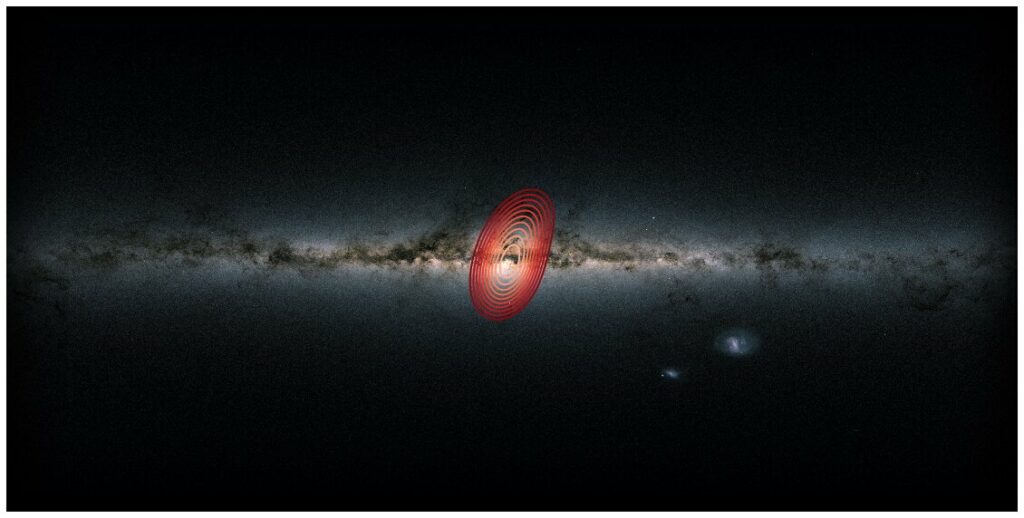We know so much about long-extinct creatures such as dinosaurs thanks to their fossilized bones which act as time capsules, revealing not only their size and shape but also clues about their diet, behavior or even mating patterns. Similarly, astronomers can learn about the Milky Way’s galactic history billions of years into the past by studying stellar relics.
In a new study, researchers describe a newly discovered ‘fossil galaxy’, which until now had been hidden deep inside our Milky Way.

Large galaxies such as the Milky Way, which contains more than 100 billion stars, take time to accrete matter and grow to their gargantuan sizes. Besides developing their own stars in galactic nurseries, large galaxies also merge with small galaxies over time, which increases their mass.
Over its 12 billion-year-old history, the Milky Way has gone through a dozen such mergers, devouring a neighbor’s stars and mixing them into an ever-growing stew of commandeered suns. With each galactic merger, the shape, size, and motion of our galaxy changed, until it formed its now-iconic spiral.
But it is possible to unwind this spiral and in the process reverse engineer the Milky Way’s previous mergers.
Just a week after Dr. Diederik Kruijssen at the Center for Astronomy at the University of Heidelberg (ZAH) reported newly identified globular clusters that match the properties of a previously unknown collision with what the team has dubbed the ‘Kraken’ galaxy, a new study is now reporting yet another hidden galaxy.
Using data from the Sloan Digital Sky Surveys’ Apache Point Observatory Galactic Evolution Experiment (APOGEE), astronomers have found the remnants of an ancient collision between the Milky Way and an early galaxy. The event, which took place 10 billion years ago when our galaxy was still in its infancy, is responsible for roughly one-third of the Milky Way’s spherical halo.
“To find a fossil galaxy like this one, we had to look at the detailed chemical makeup and motions of tens of thousands of stars,” Ricardo Schiavon from Liverpool John Moores University (LJMU) in the UK said in a press release. “That is especially hard to do for stars in the center of the Milky Way, because they are hidden from view by clouds of interstellar dust. APOGEE lets us pierce through that dust and see deeper into the heart of the Milky Way than ever before.”
The astronomers dubbed the galactic fossil Heracles, after the ancient Greek hero also called Hercules, who was granted the gift of immortality when the Milky Way was created — or so the myth goes.

In order to distinguish Heracles’ stars out of all the Milky Ways’ billions of objects, the astronomers had to measure the stars’ chemical composition and velocities using APOGEE. A few hundred of these stars had chemical makeup and velocities that were radically different from all the rest. The only reasonable explanation is that these objects belonged to a galaxy other than the Milky Way.
“These stars are so different that they could only have come from another galaxy. By studying them in detail, we could trace out the precise location and history of this fossil galaxy,” Danny Horta from LJMU, lead author of the new study published in the Monthly Notices of the Royal Astronomical Society, said in a statement.
This is just the tip of the iceberg. In the future, the fifth phase of the Sloan Digital Sky Survey and its “Milky Way Mapper” will measure spectra for ten times as many stars across the entire galaxy. Who knows what cosmic fossils astronomers will be able to discover then.
“As our cosmic home, the Milky Way is already special to us, but this ancient galaxy buried within makes it even more special,” Schiavon says.
And since you must be wondering, the next merger is scheduled to occur 2.5 billion years from now with the neighboring Andromeda Galaxy.


